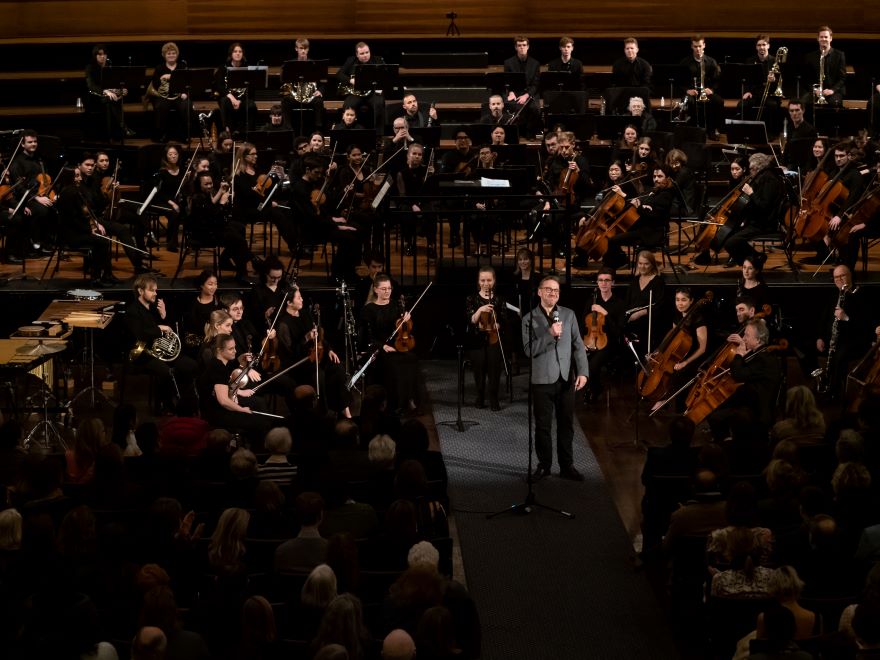Students rework an orchestral classic side by side with professionals, in what Sandra Bowdler says is a bold experiment with a structural flaw.
Stravinsky reinvented
12 August 2021
- Reading time • 4 minutesMusic
More like this
- Rewriting tradition with skill and charm
- Close encounter stirs the soul
- The great unknown
Petrushka, West Australian Symphony Orchestra & UWA Conservatorium of Music ·
Winthrop Hall, 10 August 2021 ·
One was not quite sure what to expect, as the musicians from the West Australian Symphony Orchestra and the symphony orchestra from the University of Western Australia Conservatorium of Music came together under the guidance of UK composer and animateur Paul Rissmann. The students had spent a week in workshops alongside their WASO mentors, culminating in “a performance of their new work alongside Stravinsky’s beloved Petrushka”. Little more information could be gleaned online or in hard copy at the event. It turns out “alongside” can have different meanings.
On the stage at Winthrop Hall, Jen Winley conducted a traditional orchestra playing the original version of Petrushka as written by Igor Stravinsky. On the flat in front of the stage was another smaller ensemble, its exact composition hard to determine due to Winthrop Hall’s flat seating, and the lack of program details. This smaller collective had spent the previous week workshopping the new bits; there was no score used by this improvising group, although butcher’s paper was mentioned.

It turned out that “alongside” was interpreted as “interpolated with”. The on-stage orchestra played Stravinsky’s score, and kept stopping, so the other orchestra could play improvisations which sounded very much in Le sacre du printemps mode (a work slightly later than Petrushka) with even more insistent rhythmic shifts and startling juxtapositions of mood and colour. One also heard more ironic and playful hints of Shostakovich, and even Debussy in “Golliwog’s Cakewalk” mode. In one sense the two sets of music suited each other very well, showing that western music has not changed much since 1911. Few would argue with the idea that Stravinsky was one of the founders of modernism in music, and his ideas have embedded themselves into western music ever since. It prompted some interesting reflections on what modern music is.
However the constant swapping between the ensembles was not a very satisfactory arrangement. It was hard to assess either on their merits because of the interruptions; it felt very disjointed. The original score, particularly the brass and woodwinds, shone forth in all its glory, except for being constantly interrupted. The new work was also intriguing of itself, but would perhaps be more accessible for assessment if played entire after (or before) the original.
Apart from all that, it was extremely well-played by all concerned and obviously a valuable and challenging exercise for the students, with much effort expended by all involved to bring it to fruition. As a somewhat bold experiment, it demonstrated the energy and commitment of the students, and was warmly enjoyed by a capacity crowd.
The next performance by WASO is ‘Sibelius and Brahms’, 20-21 August 2021.
Pictured top: The capacity crowd at Winthrop Hall for ‘Petrushka’. Photo supplied
Like what you're reading? Support Seesaw.






